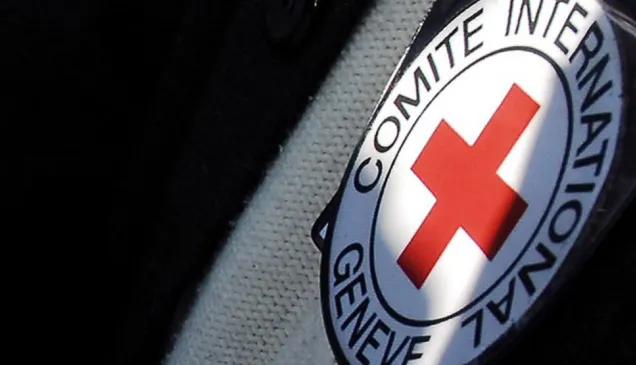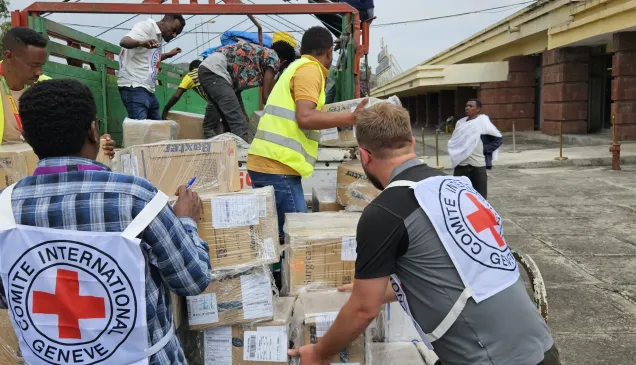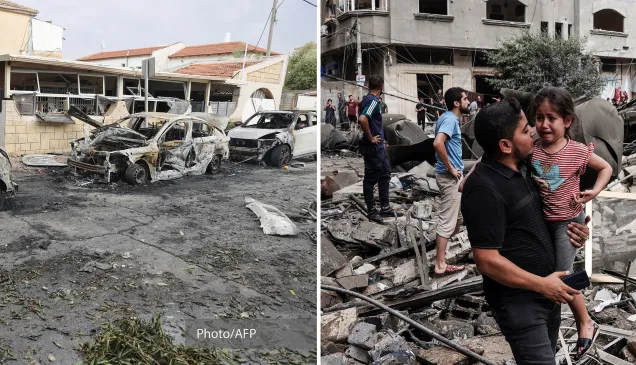Germany, First World War. British prisoners of war in a camp – time for soup. In August 1914, the ICRC set up the International Prisoner of War Agency in Geneva to centralize information management and to organize donations for prisoners. Records and lists were drawn up, relating to almost 2.5 million prisoners of war.
From our archives: protecting prisoners and detainees
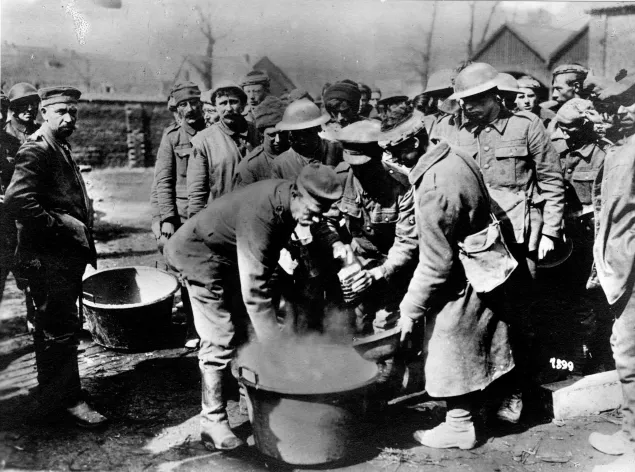
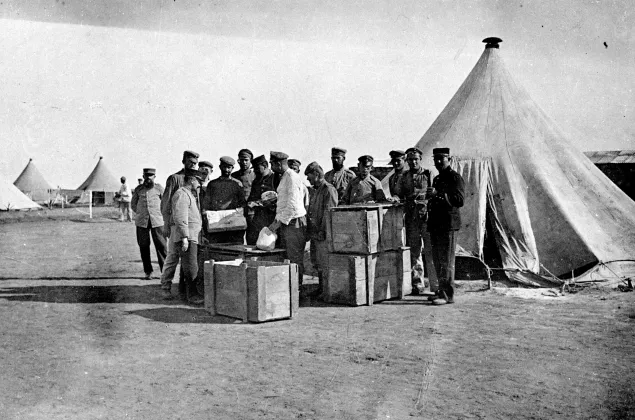
Beni-Amar Camp, Morocco, 1915. It was during the First World War that ICRC delegates first visited places of detention to monitor the prisoners' living conditions. They made over 500 visits to prisoner-of-war camps in Europe and throughout the world. This photograph depicts a visit to German prisoners of war held in Morocco.
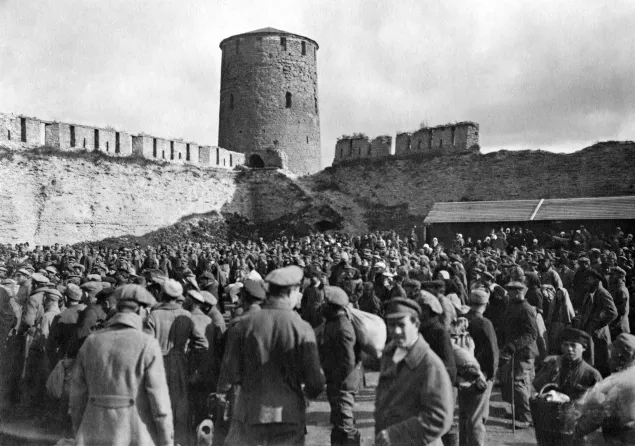
Estonia, 1920. The armistice of November 1918 did not signal the closure of the International Prisoner of War Agency, which continued its activities as part of major prisoner repatriation operations. During the four years that followed the end of the war, the ICRC organized the repatriation of 425,000 prisoners. This photo depicts the fortress of Ivangorod on the Narva river, which was a transit point for Russian prisoners of war repatriated from Germany, and German prisoners returning from Russia.
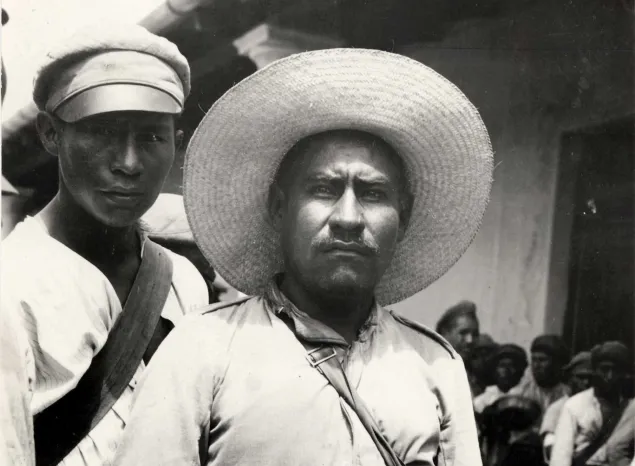
Camp for Bolivian prisoners, Villa Hayes, Paraguay, 1932. The Chaco War, which lasted from 1932 to 1935, pitted Bolivia against Paraguay. Although neither country had signed the 1929 Geneva Convention on prisoners of war, they authorized the ICRC to visit their prisoner-of-war camps on two occasions.
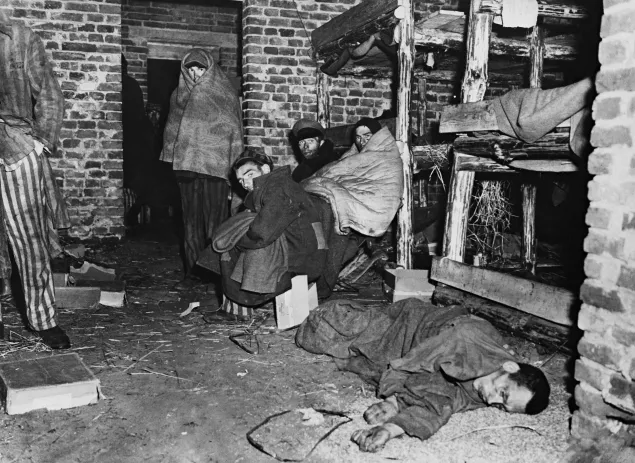
Concentration camp, Poland, Second World War. One of the greatest stains on the history of the ICRC is its failure to come to the aid of the victims of Nazi concentration camps and death camps.
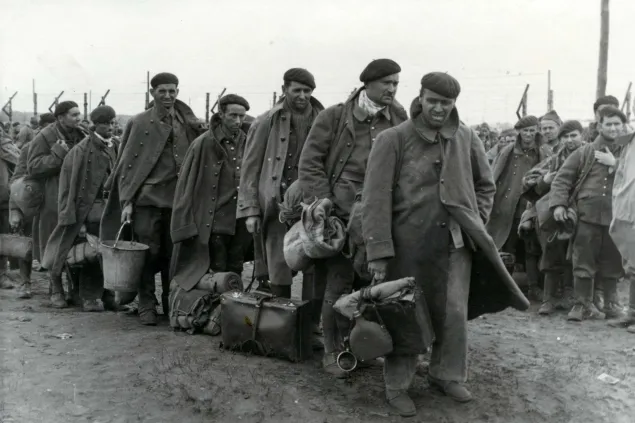
Germany, Second World War. An extensive logistics system was put in place during the Second World War to deliver aid to prisoners of war. ICRC delegates regularly visited the prisoner-of-war camps to which they were granted access. This photo depicts Stalag X B in Sandbostel.
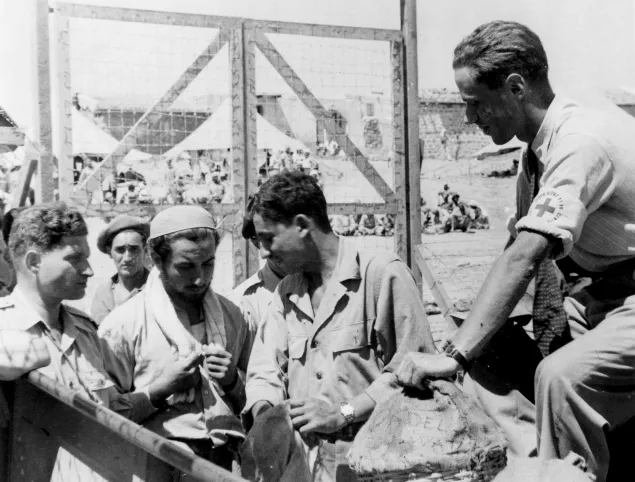
Palestine, 1948. An ICRC delegate distributes aid during a visit to an Israeli prisoner-of-war camp. In June 1948, the ICRC first obtained access to approximately 400 Israeli prisoners of war in Trans-Jordan, Egypt and Syria. The ICRC also visited some 2,000 Arab prisoners of war in Israel.
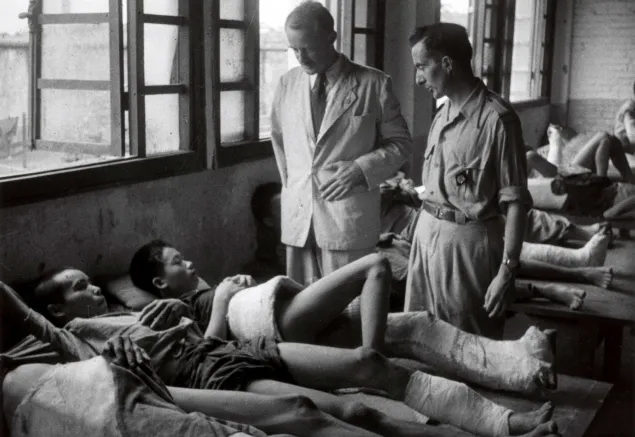
Hanoi, Viet Nam, First Indochina War, 1952. During the First Indochina War, the ICRC had no access to prisoners captured by the Democratic Republic of Vietnam. However, it was able to visit north Vietnamese prisoners of war. Here, an ICRC delegate meets prisoners in a prison infirmary in Hanoi.
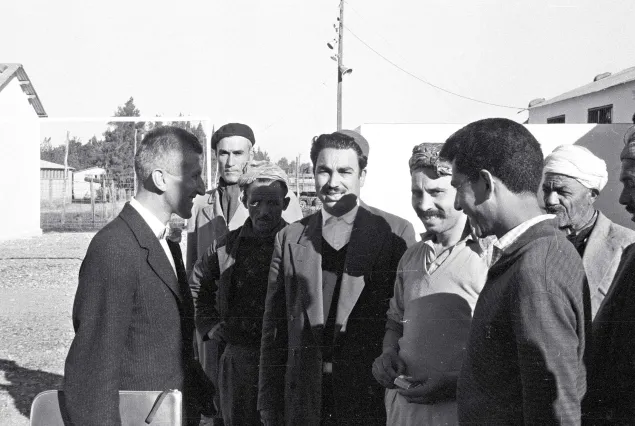
Sorting and transit centre in Bliva, Algeria, 1961. In 1955, the ICRC was first authorized to make occasional visits to prisons in Algeria, and to conduct private interviews with prisoners. France did not recognize Algerian nationalists as prisoners of war, which meant that they risked severe penalties simply for being involved in the fighting. During the final years of the Algerian war, the ICRC managed to ensure that all fighters captured carrying weapons and wearing a uniform would be treated in the same manner as prisoners of war, and therefore also entitled to ICRC visits.
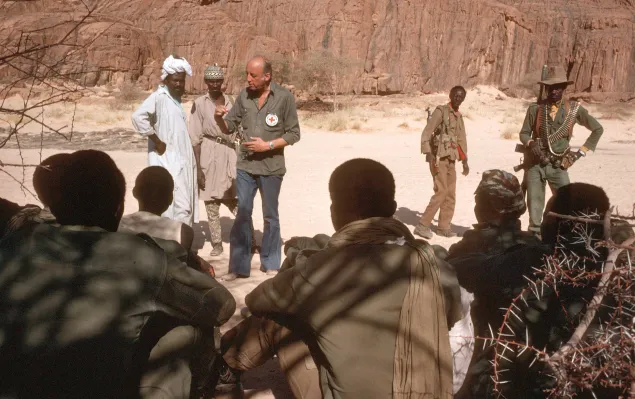
Bardai, Zoumri, Chad, 1978. First ICRC visit to prisoners of war held by the National Liberation Front of Chad.
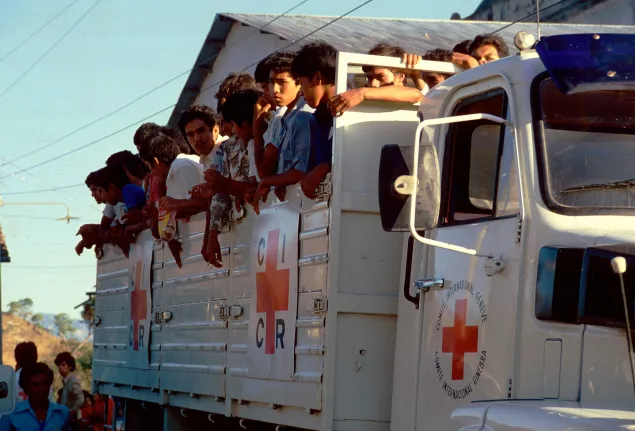
Chalatenango, San Salvador, 1984. An ICRC convoy carrying 500 soldiers released by the Farabundo Martí National Liberation Front. They are to be taken back to their barracks.
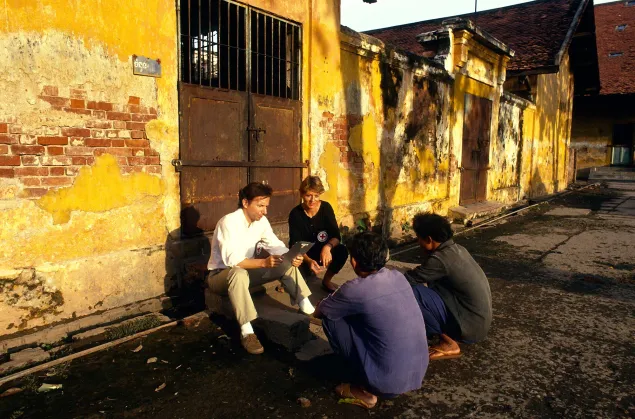
Phnom Penh, Cambodia, 1993. Visit by ICRC delegates to prison T3. Following the ICRC’s return to Cambodia after the fall of the Khmer Rouge in 1979, ICRC staff were granted access to detainees held by the government. In March 1993, the ICRC was given permission to visit detention centres under the jurisdiction of the security ministry without prior notification.
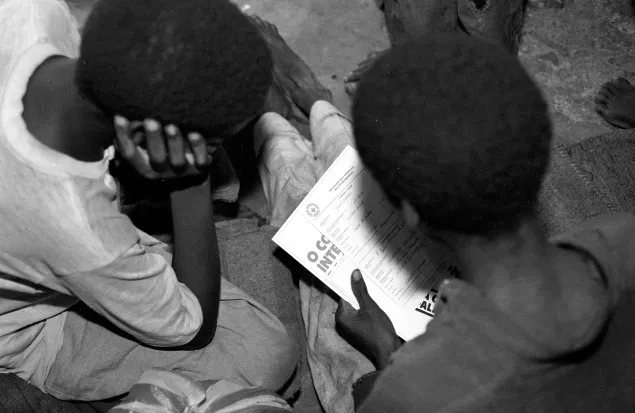
Huambo, Angola, 1995. Angolan prisoners write a Red Cross message. The ICRC helps detainees keep in touch with their loved ones. Red Cross messages are short letters containing personal news which are exchanged with loved ones through the Red Cross network.
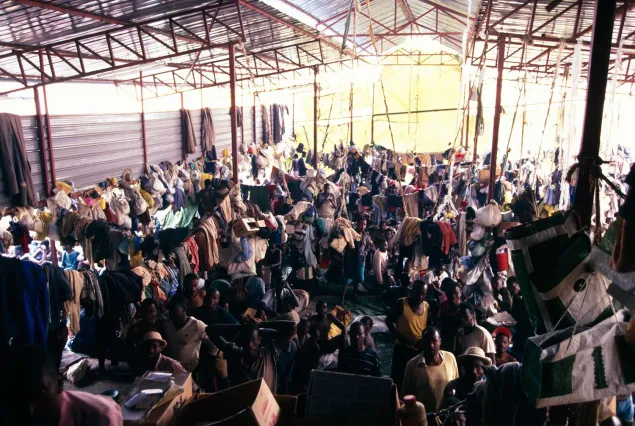
Gitarama, Rwanda, 1996. Following the 1994 massacres, tens of thousands of people accused of having been involved in the killings were incarcerated, in conditions made particularly difficult by overcrowding. The ICRC visited the prisons regularly, made representations to the authorities on a number of occasions, and provided wide-ranging assistance.
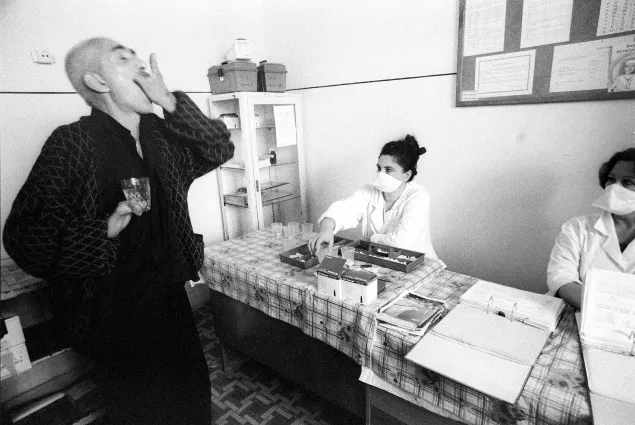
Baku, Azerbaijan, 2002. A detainee takes his daily medication under the supervision of nurses, in the wing of the prison reserved for tuberculosis patients. In 1995, the ICRC launched a programme to treat tuberculosis in prisons in a number of countries in the South Caucasus region. The battle against this disease continues, especially against the multi-drug-resistant strain.
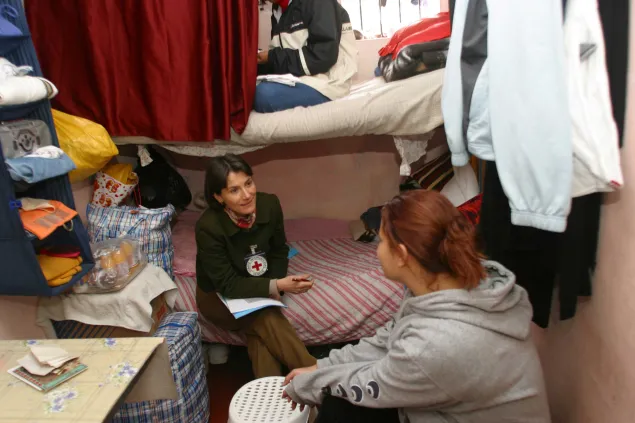
Lima, Peru, 2004. Female detainees constitute a small minority within a male-dominated prison environment. The ICRC provides special care to female detainees, to ensure that their specific needs are taken into account. Here, a delegate is having a private conversation with a detainee in the central prison in Lima.
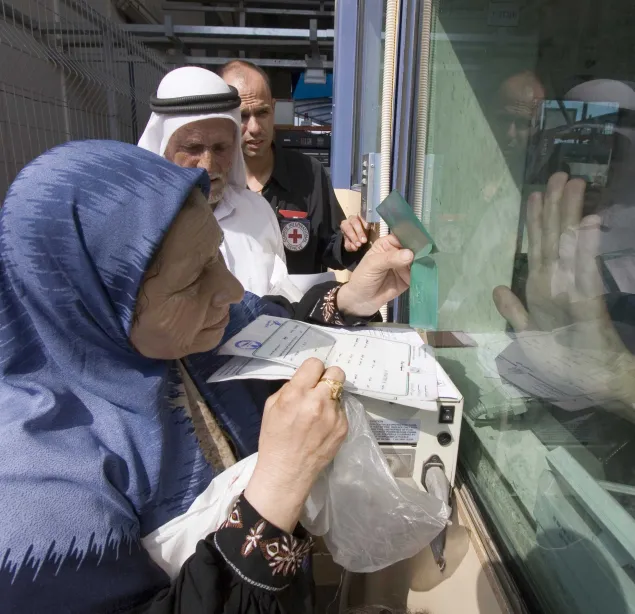
Erez checkpoint, between Gaza and Israel, 2005. The ICRC organizes and facilitates visits by Palestinian families to see loved ones held in Israel, and helps the families pass through checkpoints and gain access to the detention centres. Visiting rights, suspended in 2007, were re-introduced in July 2012. Virtually every Monday, the ICRC accompanies the families of detainees from Gaza to Israel.
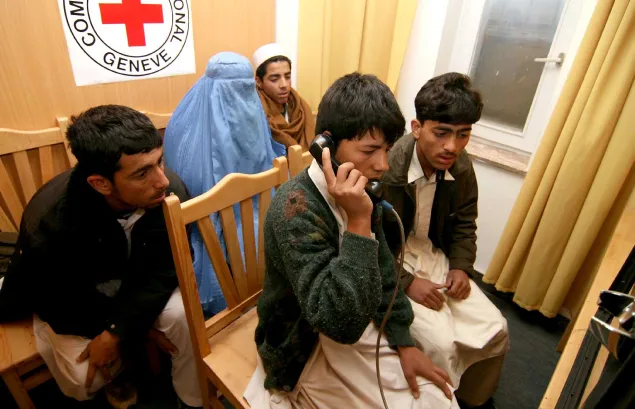
Kabul, Afghanistan, 2008. The ICRC has set up videoconference facilities in a number of its delegations to enable the relatives of those detained by the United States in prisons in Bagram (Afghanistan) and Guantanamo to contact their loved ones.
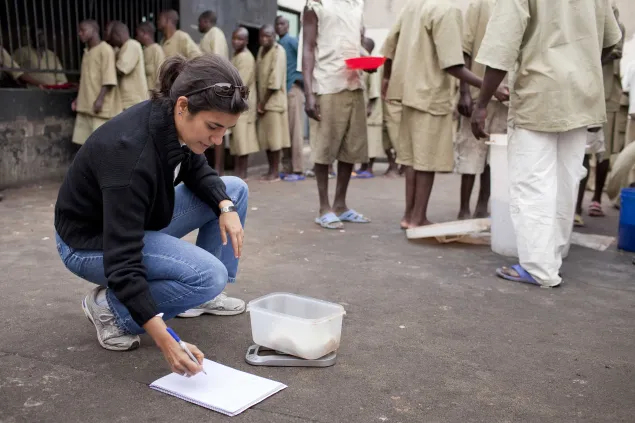
Masvingo, Zimbabwe, 2010, Preventive detention centre. In 2008, in the wake of poor harvests and a cholera epidemic, a large number of cases of severe malnutrition were recorded in prisons. The ICRC, working together with the authorities, launched an emergency operation to improve the nutritional condition and health of detainees. Here, a delegate is weighing out food rations to ensure that they correspond to standards laid down by the ICRC and the Zimbabwe Prison Service.
The ICRC's concern for the fate of prisoners dates back to the Franco-Prussian war of 1870. The first visits by ICRC delegates to prisoner-of-war camps, in order to inspect how prisoners were treated and their living conditions, took place during the First World War. Today, the protection of prisoners and detainees remains a key part of our activities.

